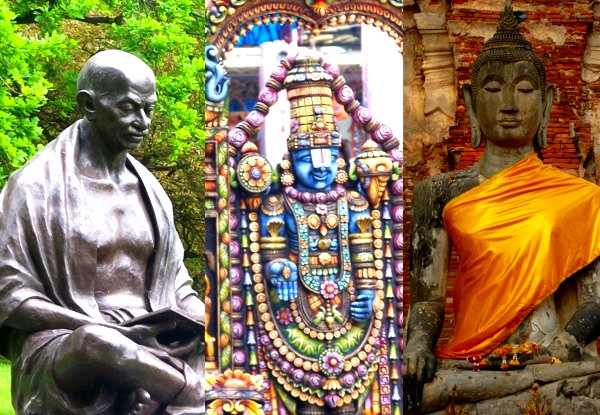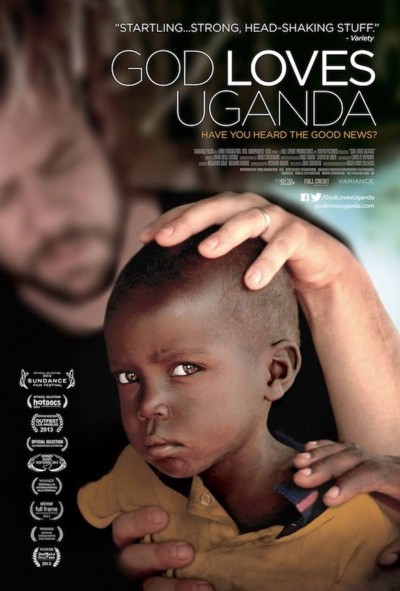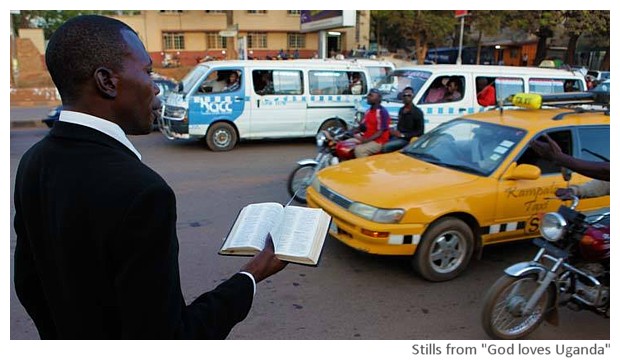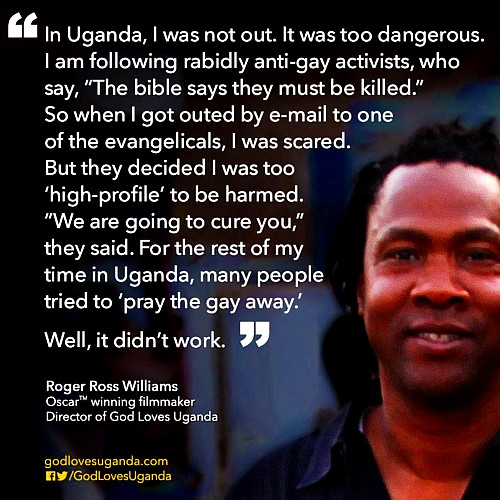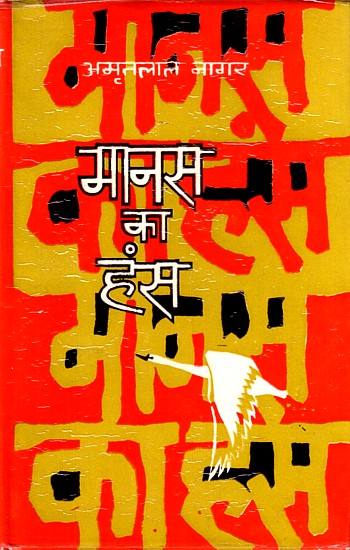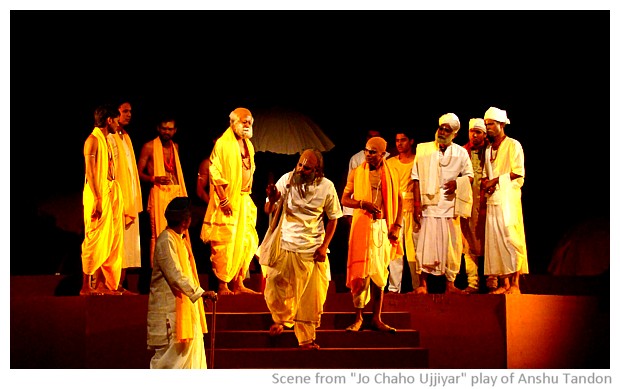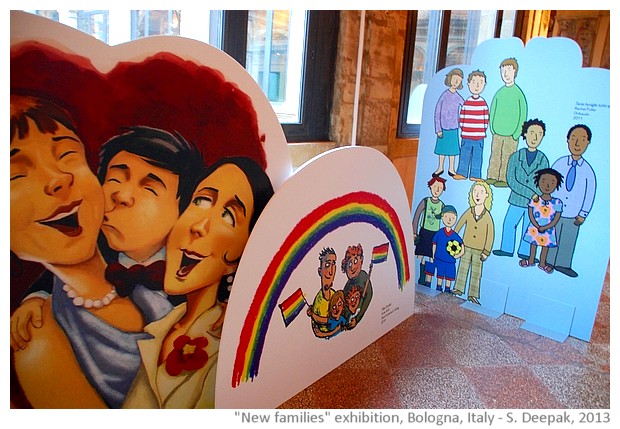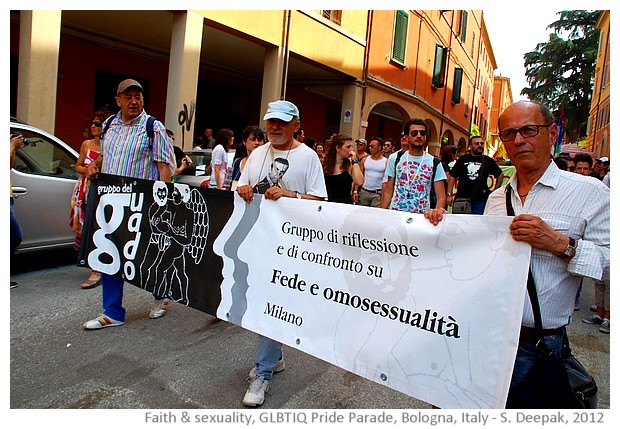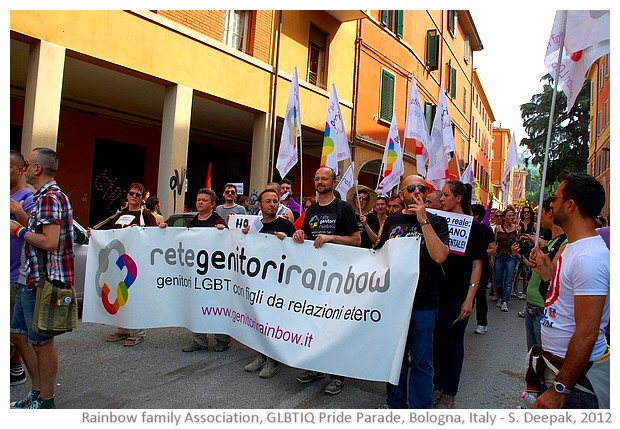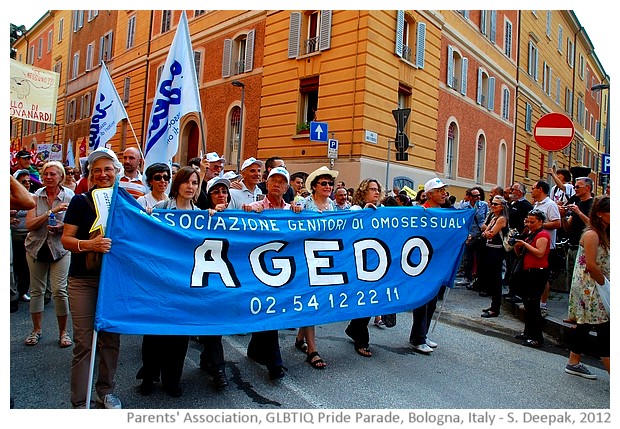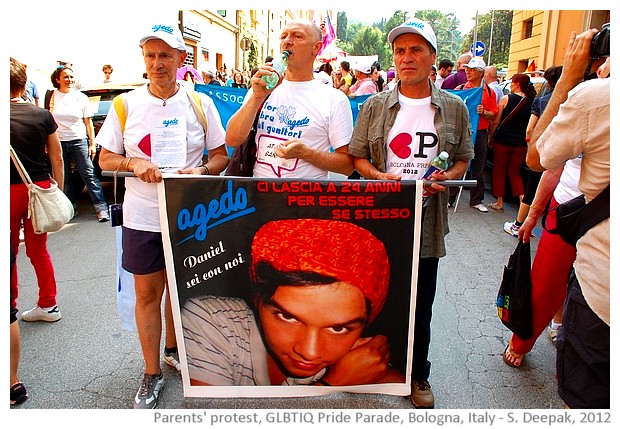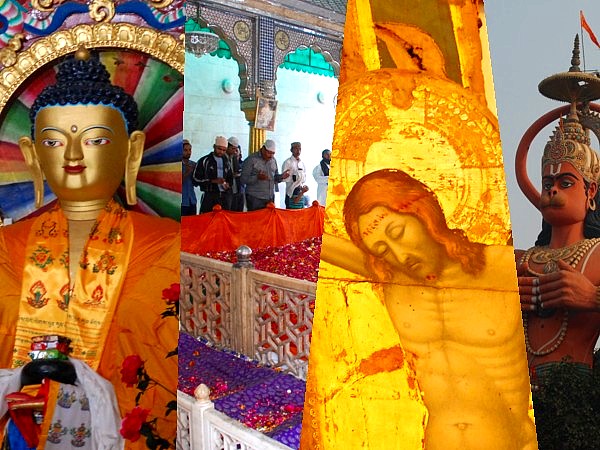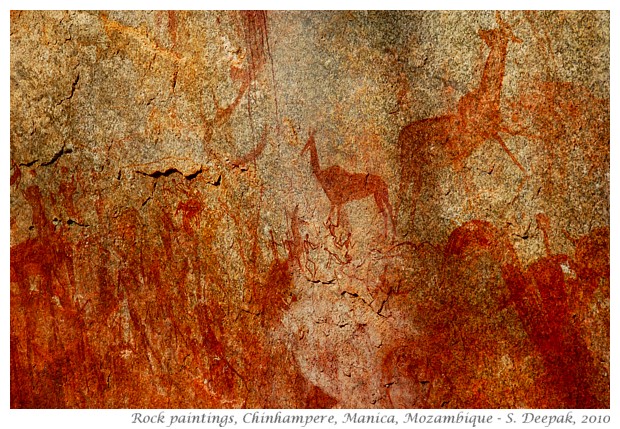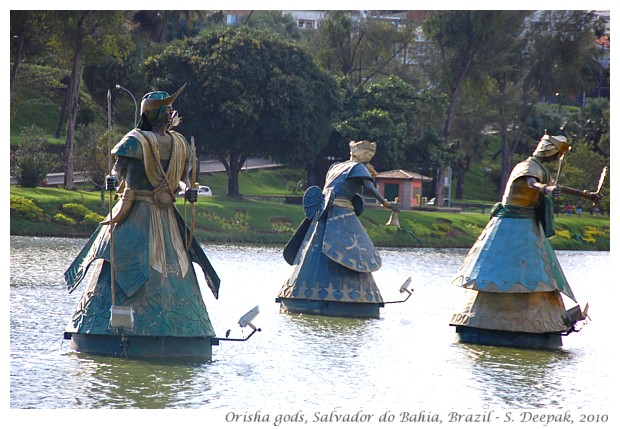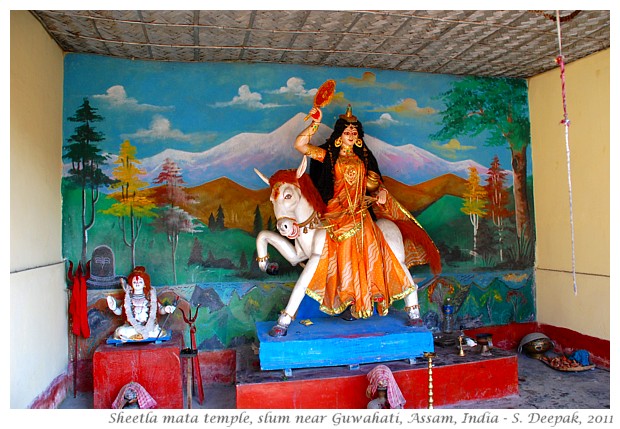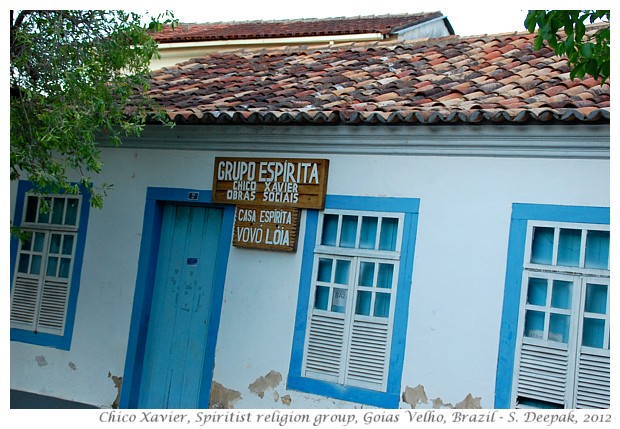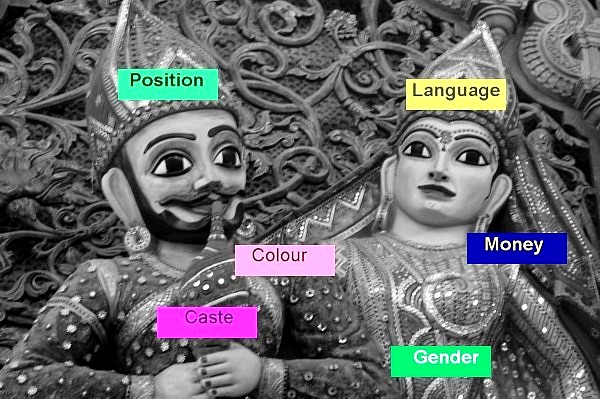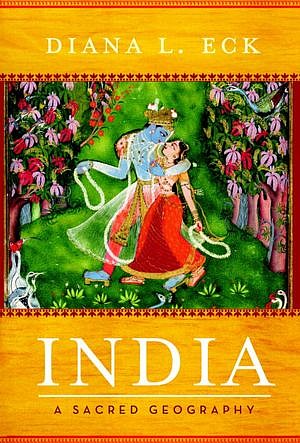Ramayana (Story of Rama) is an ancient Indian tale about prince Rama. Centuries ago, the tale of Ramayana had spread from India to the neighbouring countries such as Thailand, Cambodia and Vietnam. In the sixteenth century,
Tulsi Das rewrote Ramayana as "
Ram Charit Manas" in Avadhi language (close to Hindi language). Till that time, the most well known version of Ramayana in India was in Sanskrit, written by Valmiki. Thus Tulsi Das is credited with making the sacred text accessible to a large number of persons in India, because Awadhi is a language of common people while the knowledge of Sanskrit is limited to a few.
Tulsi Das (1554 - 1644), is credited with different literary works in Awadhi and Brajbhasha variations of Hindi. A contemporary of William Shakespeare (1564-1616), his influence on large parts of India has been enormous, but unlike Shakespeare, Tulsi's historical figure and his literary abilities have largely been ignored by academics in India and internationally.
In recent years, Tulsi's figure has been "taken over" by some conservative Hindu groups, who give a selective interpretation of his works that supports specific political and socio-religious ideologies.
This article reviews “
Manas ka Hans” a bio-fiction about Tulsi Das, written by Hindi author
Amrit Lal Nagar in 1972.
INACCESSIBILITY OF RELIGIOUS TEXTS
A few years ago, while visiting Mongolia I had started thinking about
the way different religions use languages across the world, to ensure that sacred texts are not understood by majority of their followers. We were in the Gandam Buddhist monastery in Ulaan Bataar and I had asked the person accompanying me, to tell me about the words written on a giant bell in the temple courtyard.
“I can’t tell you what it says, because the monks use Tibetan language for all their prayers!” he had told me. Buddhism had come to Mongolia through the Tibetan monks and even today in their temples their prayers continue to be in Tibetan.
I had heard something similar in Vietnam, where the temples often have their prayers in Chinese and not in Vietnamese.
In Catholic churches around the world, the mass was celebrated in Latin till some decades ago. It is relatively recently that the Bible has been translated to languages like Malayalam (some years ago I had met Fr Sebastian, who had done this translation).
In India, majority of Hindu prayers for specific religious rites, are in Sanskrit. Thus, Tulsi’s "Ram Charit Manas" played a fundamental role in making Ramayana accessible to common persons. Because of this, many persons consider him as a saint and call him Sant Tulsi Das or Acharya Tulsi Das.
HISTORICAL FIGURE OF TULSI DAS
If you look for information about Tulsi Das on internet, you will mostly find mythical stories - about his being an incarnation of Valmiki, his miracles and his meetings with ghosts and gods such as Hanuman and Ram.
He was born around the time Mughal emperor Hamayun had returned to India in 1554 AD. Tulsi saw the reigns of three more Mughal emperors during his life time - Akbar, Jahangir and Shah Jahan. He was a writer and a poet during those reigns. Yet analysis of his historical figure are few.
In recent years, some persons have worked on collecting historical information about Tulsi Das. For example, some years ago
Anshu Tandon had presented a play called "
Jo chaho Ujiyyar" focusing on Tulsi's struggles as a Hindu reformer.
Excerpts of this play (in Hindi) are available on Youtube. Still much more can and should be done to understand the historical figure of Tulsi Das. (Below a scene from"Jo chaho ujjiyar" play)
BIOGRAPHIES OF GOSWAMI TULSI DAS
According to Amrit Lal Nagar in his introduction in the book “Manas ke Hans”, there are
five biographies of Tulsi Das written by persons who were his followers - Raghubar Das, Beni Madhav Das, Krishna Dutt Mishra, Avinash Rai and Sant Tulsi saheb. However, Nagar explains that according to expert academics, none of these biographies is accurate,and they differ from each other about significant events in Tulsi Das' life.
For writing "Manas ke hans", Nagar looked at these biographies, as well as, looked at other oral traditions and works of academics on Tulsi Das. He also did a critical reading and analysis of Tulsi Das's own writings. He acknowledges that the information he found was not complete and thus his book is a bio-fiction rather than a biography.
Nagar mentions two additional important sources of information, " Among others, I want to make a loving mention of friend late
Rudra Kashikey (Pen name of Shiv Prasad Mishra) who could not complete “
Rambola bole”. Rudra ji was a walking encyclopedia of Kashi. Late
Dr Rangey Raghav had also expressed his ideas about Tulsi Das through his work “
Ratna ki baat".
TULSI DAS'S LIFE HISTORY FROM "MANAS KA HANS"
The book is written in flashbacks from the point of view of an old Tulsi Das telling his story to his followers.
Context: In 1540, Hamayun had to leave India after losing the war to the forces of Sher Shah Suri. Over the next 12 years, Sher Shah was followed on Delhi's throne by Islam Khan and Adil Khan. In 1554 when Tulsi Das was born in Vikrampur, Hamayun was engaged in the war with the Pathan forces of Adil Shah.
Childhood: Tulsi's mother Hulsi died while giving birth to him. His father Pandit Atma Ram prepared his son's horoscope and found that his son had an unfortunate mix of planets in his birth chart and asked the child to be given away.
Muniya, a
shudra ("low caste") servant in the home of Atma Ram, took the baby across the river to her mother-in-law Parvati amma, a beggar. Soon after, Mughal forces destroyed Vikrampur and Pandit Atma Ram died childless after some years. Parvati amma named the child
Rambola, and he grew up as a singing beggar, who walked the village streets asking for alms and singing prayer songs (bhajans) of poet saints like Surdas, Kabir and Mira. When Rambola was five years old, Parvati amma died and Rambola, tormented by the Brahmins of the area, ran away to
Sukar, at the junction of Ghagra and Saryu rivers.
At Sukar, Rambola was taken as a disciple by Swami Narhari, who took him to Ayodhya for his religious initiation and thus Rambola became Tulsi Das.
Young Tulsi: Tulsi studied with Guru Shesh ji Maharaj in Varanasi and received the title of Shastri. During this period, he composed "
Hanuman Chalisa" (Prayer to Hanuman) to overcome his fear towards the evil spirits (
bhoot-pichash) and became famous for his singing of religious texts and compositions of prayers.
He journeyed as a rich young Brahmin man, to the place where once his birth-village Vikrampur had stood, and there he built his new family home and a temple. His fame as a singer and a poet brought back many other persons who had lived in that area in the past and knew his family. Thus a new village called Rajapur (named after Tulsi's friend Raja Bhagat) came around his house.
Marriage: Raja convinced Tulsi Das to visit Pathak maharaj, an old friend of his late father, pandit Atma Ram. Pathak had no sons, and wanted a learned husband for his daughter
Ratnabala, so that he could leave his valuable book collection to his son in law. Pathak asked Tulsi to marry his daughter and finally Tulsidas agreed.
Tulsi fell in love with his wife and together they had a son Tarapati. For earning livelihood, Tulsi Das decided to go to work in Varanasi, while his wife went to stay at her father’s home. After a few months, Tulsi Das went to see his wife. During this visit, Ratna said to him that he did not have self-control and that he could not wait for sex.
Renouncing of marriage: Hurt by his wife’s words, Tulsi Das left home that night and went to Ayodhya. For different months he wandered around as a beggar and did occasional work - including work as an accountant in a
math (Abbey of Hindu monks) for some time. In this period, he travelled in different cities of the region between Ayodhya, Varanasi and Chitrakoot. For a period he was responsible for a
gaushala (cow home) in Varanasi, and thus earned the title of Goswami or Gosain.
Full of remorse, Ratna went to see her husband to ask him to come home, but Tulsi Das was firm that he had renounced his household duties, he was now a
Brahmachari (celibate) and that he would not go back to married life. Their son Tarapati died due to small pox. Thus, Ratna lived alone in their house in Rajapur.
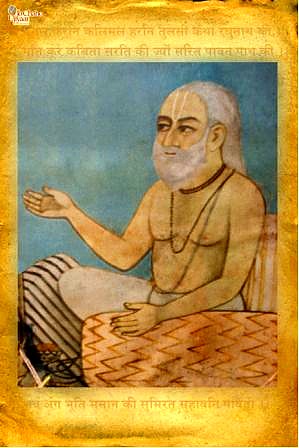 Writer Tulsi Das
Writer Tulsi Das: Tulsi Das on the other hand, continued his writing of prayer-poems and retelling of "Ram Charit Manas", the story of Ramayana. Other Brahmins of Varanasi felt that making the sacred book accessible to general public was against the scriptures and thus started different campaigns against him. However, with popular support, Tulsi Das managed to thwart their machinations.
Called “
mahatma” (Great spirit) by general public for his literary works and for his emotional singing of prayers, Tulsi Das died in Varanasi at the age of ninety years.
In the book Tulsi’s faith in the figure of Ram constantly moves between the life and stories of Ram as the God incarnate and Ram as the symbol of a formless infinite God.
VIEWS OF TULSI DAS ABOUT CASTE SYSTEM
It must have been painful for the child Tulsi to understand that his father had preferred to believe in the stars and had abandoned him. Perhaps that was the reason, why as a grown up young man, he went back to his old village and built his home there, as a message to his father that he was not unlucky and that he had managed to accumulate enough wealth to build himself a house?
How much of those early experiences of rejection from his father and his life as a child-beggar searching for an identity and security, influenced his later decisions to renounce married life and to fight with Brahmins?
I felt that his early years as a child growing up in a "low-caste"
shudra home and his difficulties at different periods of life with the Brahmins in Ayodhya and Varanasi, should have given him an understanding and a feeling of solidarity about the oppression and marginalization faced by persons who are seen as inferior in the caste hierarchy.
At the same time, I had read other criticisms about Tulsi Das. For example, a line from Ram Charit Manas "
Dhol Ganwar Shudra Pashu Nari, Sakal Tadan ke Adhikari" (Drums, the illiterate, lower caste, animals and women, all need to be beaten to make them work), is often quoted to explain Tulsi Das's views on castes and women.
Thus, while reading "Manas ke Hans" I was curious to read about Tulsi's socio-religious views.
Since the book is a bio-fiction, we cannot say that these were really the views of Tulsi Das but these can be considered as the understanding of the writer Amrit Lal Nagar about Tulsi Das. In the introduction to the book, Nagar explains how he wrote it:
"Before writing this novel, I read with particolar care "Kavitavali" and "Vinaypatrika". Vinaypatrika contains different invaluable moments about inner conflicts of Tulsi, and thus I thought it appropriate to build the psychological framework of Tulsi on their basis. Even about the psychological background to his writing of "Ram Charit Manas", I found help in "Patrika". Some details about Tulsi's life can be found especially in Kavitavali and Hanumanvahak and occasionally in "Dohavali" and "Geetavali". From the innumerable oral-stories that are so popular about Gosain ji, I have included those that could fit in with this psychological framework..."
In the book, Nagar's Tulsi answers these accusations about his being a casteist and being against the women by explaining, "
Ram Charit Manas is a story and in the story, different characters have different beliefs. If you take the beliefs of any of those characters and say that this is Tulsi Das' belief, then it is wrong. You can also find some other character in the story who has completely opposite belief." Thus Nagar felt that it was manipulative to quote of a line from Ram Charit Manas as a justification for characterizing the personal views of Tulsi Das.
The book also has an episode where Tulsi helps a hungry
chamar (one of the "untouchable" castes) man who is accused of killing a Brahmin and gives him food, going against the Brahmins of the city. In this episode, Tulsi justifies the killing of the Brahmin because "he was cruel and did not behave as a Brahmin." (p. 319-20)
The book also has different references to poet-saints of his time - there is a small episode (p. 179) about young Tulsi's meeting with eighty-five year old Surdas in Mathura and another episode about his meeting with Rahim (p. 364). The book mentions some disagreements between Tulsi and the followers of Kabir, though Tulsi expresses respect for Kabir's ideas (p. 325). As these poet saints were reformists and against the caste oppression, we can see that Nagar's Tulsi Das was more humane and progressive figure.
TULSI DAS, MUSLIMS AND BABRI MOSQUE
Babur had come to India in 1526 and he had died in 1530. Thus building of Babri mosque at the site of Ram Janamabhumi (birth place) had occurred a couple of decades before Tulsi Das' birth. He had lived through the reigns of Akbar, Jahangir and Shah Jahan. Though the book was written in 1972, I was also curious to know about how Nagar has depicted Tulsi Das' relations with Muslims and if he had written about the Babri mosque controversy, that had inflamed opinions in India in 1992 when the mosque was demolished by some Hindu groups.
In the book Nagar depicts the UP villages as places where Hindu and Muslim communities have been living together in close relationships. Many episodes of the book located in Tulsi's native village Rajapur, have different Muslim characters, shown as Tulsi Das's close friends and neighbors. For example, in the book, a Muslim neighbor, Bakridi baba, born a couple of days before Tulsi, tells the story of Tulsi's birth and his banishment to Parvati Amma's village. They also come to him for his advice about stars and future foretelling.
There are different episodes in the book where Nagar mentions Babri mosque. Here are some examples:
After a pause Medha Bhagat said, "Recently I was in Ayodhaya. There, where after destroying the holy temple of the birthplace, king Babar has built a holy mosque. Nearby, on a hillock I met a young man [Tulsi Das], lost in Rama's love... from morning till sundown, sitting behind a tree, he kept on gazing at the mosque. Sometimes he laughed, sometimes cried, and sometimes like a yogi he became lost in meditation .." (p. 135)
[A disciple asked to Tulsi] "After leaving the abbey, where did you go?" "I stayed in Ayodhaya, where else could I go? I begged for food and in the night, I slept outside the mosque together with other fakirs .." (p. 283)
One day he went to the Babri mosque that was built at the site of Rama's birth place. A Sufi saint was reading the verses of Mohammed Jayasi to the soldiers and the public. Written in dohe and chaupai (two and four lines verses), that divine love poem was so beautiful that even Tulsi lost himself in its words. (p. 294)
The date of Ramanavami (Rama's birth date) was close. A lot of movement had started in Ayodhaya because of it. Ever since, they had destroyed the birthplace temple and built the mosque in its place, since then followers of Rama could not enter the place to pray to their lord. Everywhere in India, the holy day of Ramanavami brings joy but in Ayodhaya, this day comes on the sharp edge of a sword... the area of Rama birthplace is made wet with the blood of martyrs every year... thus the ruler prohibit any public telling of the Rama's story.. the followers celebrate the day hidden in their homes .. Tulsi felt these things in his heart. In Rama's birthplace, Rama's story cannot be told was an unacceptable injustice for Tulsi. .. Everyday around mid-day he always went towards the Babri mosque. Behind the mosque, a short distance away, there was an old hillock. Tulsi used to sit on that hillock in such a way so that he could see the mosque built on the birthplace. For long time he sat there. He was friends with Muslim fakirs who sat in front of the mosque. (p. 295)
[When Tulsi was not allowed to sit behind the mosque:] "Lord Rama, you are my witness that I have never thought anything bad about this mosque. A place of worship remains worthy of worship even in this form. Even now, it is a place where people pray in front of the infinite formless supreme consciousness. When I had come away from Ramanujiya abbey, I used to come to sleep here. I was friends with these same persons, but then I was also seen as a fakir but now I am seen as a Hindu. Rama, please come back to stop this injustice." (p. 296)
Around mid-day, the drummers announced in different parts of Ayodhaya .. the government of emperor Akbar had sent orders from Delhi that in the courtyard inside the Babri mosque, people can make a platform for the worship of Rama. .. Tulsi was very happy. (p. 298)
[While Tulsi was writing Ram Charit Manas] Ever since the platform for worshiping Rama was built in the mosque and people could visit it, the people of Ayodhaya were happier. The soldiers of the mosque behaved less harshly. The anger between Hindus and Muslims had reduced. Even though some conservative Muslims were against this decision of Akbar, but they did not have any power. Tulsidas, every day, before starting writing, used to visit the Rama's statue on the platform inside the mosque. (p. 301)
Thus, Tulsi's views about Babri mosque in Nagar's book ask for the possibility of praying to Ram but they are also about living in harmony and friendship with Muslims and respecting the mosque. Nagar's Tulsi is happy to worship Rama in the courtyard of the mosque and looks at it as a place of the worship to the "infinite formless God".
CONCLUSIONS
Tulsidas was a historical figure whose name has been familiar, not just to a lot of Hindus, but to most Indians. He had played an important role in simplifying the story of Rama and making it understandable to the common public.
He was a contemporary of
William Shakespeare. Like the influence of Shakespeare on the English literature, Tulsi Das' literary works have had an enormous influence in India.
However, while Shakespeare's works have been the subjects of an enormous amount of studies and analysis, Tulsi Das did not receive much academic attention. In the recent decades, there has been some attention towards Tulsi Das' work but often it is in mythological terms rather than historical. It also tends to make a manipulative use of his works to justify specific political and religious ideologies that support conservative Hindu worldviews.
However, the biography of Tulsi Das written by Amrit Lal Nagar, presents him as a more humane and progressive thinking, creative and mystic person, who was shaped by his early life experiences of marginalization and exclusion. In the book he comes through as a person of his times. At the same time, he is someone, who was also linked to some of the key progressive figures of those times.
Note: I have translated from Hindi the different passages from the Book quoted in this article. I have tried to remain faithful to the sense of the phrases rather than doing literal translation.
***


